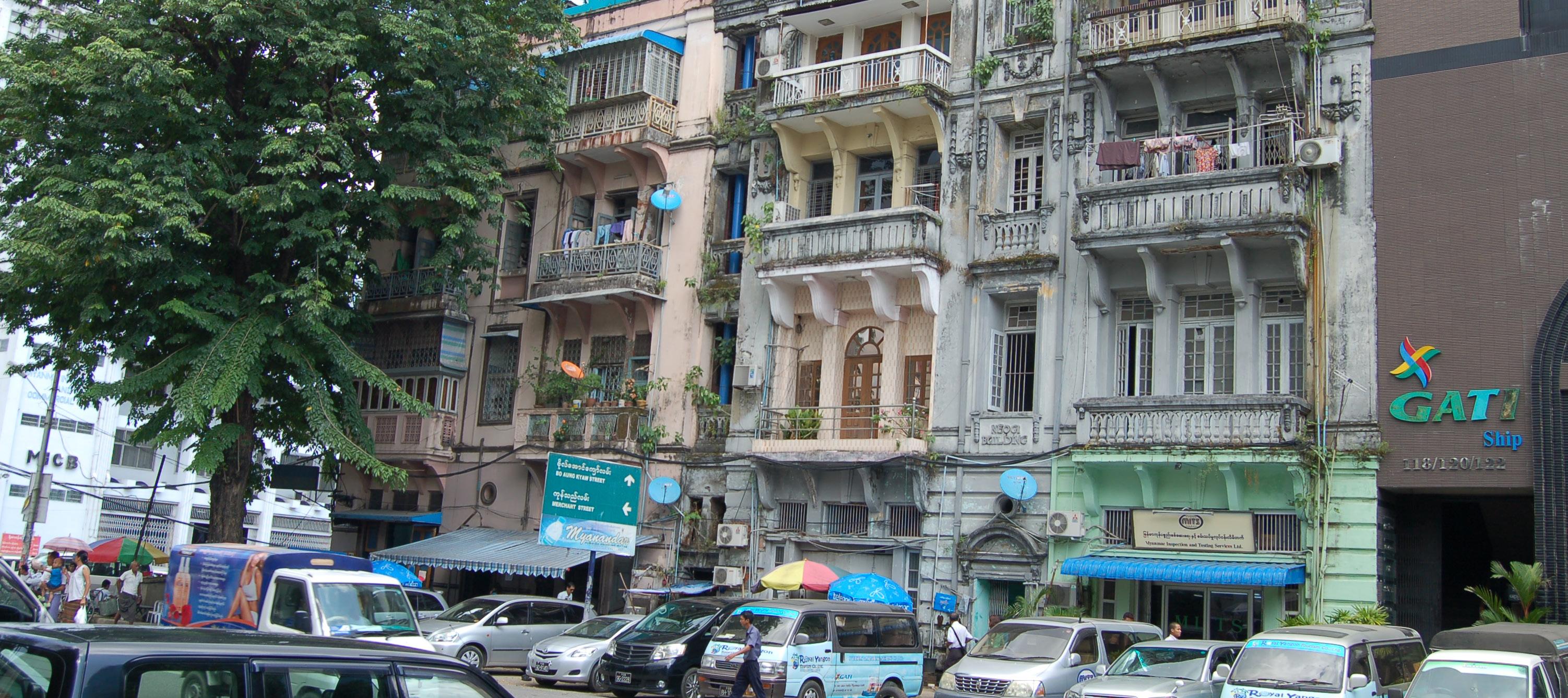
2 minute read
Factors that Contribute to Displacement
1. Introduction
The city of Yangon is undergoing a period of rapid change and development following recent political transitions in Myanmar that have spurred foreign and domestic investment. Real estate development within the historic downtown of Yangon, commonly referred to as the central business district (CBD), is escalating as are real estate values. Most of the development could be described as ‘ad hoc’, raising concerns within the city and internationally about community preservation and heritage conservation, among other vulnerabilities. The densely-populated, diverse community of the CBD lives amidst a high concentration of British colonial era buildings, which have historically provided affordable residences, commercial units and invaluable public spaces.
Image 2 - Yangon’s Central Business District (CBD) at night
The current legal system in Myanmar exacerbates the issue of development control in the CBD. There are no heritage protection laws that protect colonial-era architecture. Unclear legal requirements and rights have resulted in uncertain building and apartment ownership, poorly-defined tenure status, and confusion as to landlord-tenant responsibilities and service provision. Widespread informal real estate transactions and arrangements have made property law in Myanmar a sensitive issue that is not openly discussed. These gaps within the legal framework must be addressed in tandem with policies that foster equitable heritage conservation, community preservation and development in the CBD.
This report was prepared in the fall of 2014 for the Yangon Heritage Trust (YHT), a nongovernmental organization that advocates for the conservation of the rich heritage of downtown Yangon. YHT recognizes the potential for Yangon to be a model for equitable, progressive heritage conservation that improves quality of life for all residents. Yangon has a unique opportunity to develop heritage conservation tools that can empower local communities, deter displacement, encourage appropriate development and conserve spaces of value. Now is the time to implement this goal, as Yangon and its CBD are still in the early stages of development and economic transition. The purpose of this report is to assist YHT in its mission by outlining strategies and opportunities
that can address and mitigate the displacement of downtown communities as part of an overall heritage preservation strategy.
The report, prepared by Columbia University students of the Planning and Historic Preservation Departments of the Graduate School of Architecture, Planning, and Preservation, the School of International and Public Affairs and the Law School, in a joint planning and historic preservation studio, presents strategies for addressing community preservation in the context of a vision for a future Yangon that protects both people and places and reinforces
Image 3 - Apartment buildings in Yangon’s CBD heritage and community through development. The report grounds this vision with five sets of strategy-based recommendations, focusing on issues of transparency and equity, economic diversity, cultural inclusiveness, habitability and affordability, and an integrated community.
The strategies and recommendations are based on the belief that, through protecting existing communities from displacement and conserving the historic environment, Yangon can become an even more desirable place to live, work, and visit.

1.1. The Yangon Heritage Trust
The Yangon Heritage Trust (YHT) is a nongovernmental organization located in Yangon, Myanmar that was founded by historian Dr. Thant Myint-U in March of 2012. Composed of architects, historians and cultural heritage specialists, the Yangon Heritage Trust’s team works to preserve the city’s unique architectural legacy, and create an understanding of how the built environment can positively impact the livability of the city for existing and future residents.





